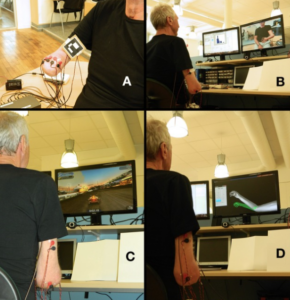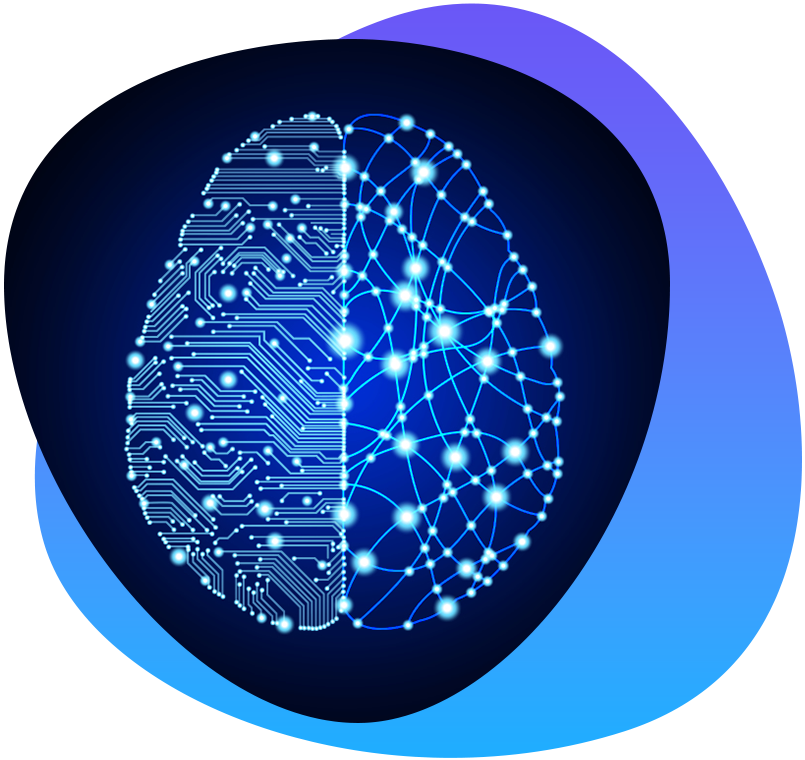Relieving phantom limb pain through mixed reality and artificial intelligence
Why are new treatments needed for phantom limb pain?
Over 60 treatments for phantom limb pain have been proposed in medical literature, yet an effective solution has not been found.
The underlying cause of this complex condition is not yet understood but significant advances are being made by our team.
Professor Max Ortiz Catalán is researching the changes in the nervous system which cause phantom limb pain [1], with the aim of developing more effective treatments.
Relieving phantom limb pain through augmented reality
Our new approach to phantom limb pain therapy focuses on helping patients to purposely re-engage the neural circuitry (connections with the brain) affected by their amputation. In a limb, this neural circuitry relates to motor control and sensory perception [2].
To do this, artificial intelligence (AI) algorithms interpret the intended movements of the missing ( phantom) limb.
This information is then projected in real time to a mixed reality environment for the patient to complete interactive tasks – performing actions with their missing limbs.
Activities range from moving a virtual limb to various positions to playing games designed to increase the dexterity of their phantom limb.
Clinical studies have demonstrated that patients who have undertaken these new AI treatments have reported a relief from pain. The treatment has also improved their sleep quality and daily life experiences.
Reduction of pain medication – which can have serious side effects such as addiction – has been another important benefit of this approach

Ref: Ortiz-Catalan et al., Frontiers in Neuroscience, 2014.
Next steps for the Bionics Institute research team
Professor Ortiz Catalán and Bionics Institute researchers are looking to apply findings from their phantom limb pain research to other conditions, such as pain caused by nerve injuries or stroke.
Our team is also working on producing high quality evidence on the effectiveness of these approaches, while using the lessons learned to further develop more effective treatments.
Key publications
- Ortiz-Catalan M, Guðmundsdóttir RA, Kristoffersen MB, Zepeda-Echavarria A, Caine-Winterberger K, Kulbacka-Ortiz K, Widehammar C, Eriksson K, Stockselius A, Ragnö C, Pihlar Z, Burger H, Hermansson L. Phantom motor execution facilitated by machine learning and augmented reality as treatment for phantom limb pain: a single group, clinical trial in patients with chronic intractable phantom limb pain. Lancet. 2016 Dec 10;388(10062):2885-2894. doi: 10.1016/S0140-6736(16)31598-7. Epub 2016 Dec 2. PMID: 27916234.
- Ortiz-Catalan M., “The stochastic entanglement and phantom motor execution hypotheses: a theoretical framework for the origin and treatment of PLP”, Frontiers in Neurology, 2018, 9:748. Doi: doi: 10.3389/fneur.2018.00748.
- Ortiz-Catalan M, Sander N, Kristoffersen M, Håkansson B, Brånemark R. Treatment of phantom limb pain (PLP) based on augmented reality and gaming controlled by myoelectric pattern recognition: a case study of a chronic PLP patient, Front. Neurosci. 2014. Volume 8 – 2014, Doi: https://doi.org/10.3389/fnins.2014.00024
References
1. C. L. McDonald, S. Westcott-McCoy, M. R. Weaver, J. Haagsma, and D. Kartin, “Global prevalence of traumatic non-fatal limb amputation,” Prosthetics Orthot. Int., vol. 45, no. 2, pp. 105–114, Apr. 2021, Doi: 10.1177/0309364620972258.
2. Ortiz-Catalan M. “The stochastic entanglement and phantom motor execution hypotheses: a theoretical framework for the origin and treatment of PLP”, Frontiers in Neurology, 2018, 9:748. doi: 10.3389/fneur.2018.00748
Medical Disclaimer
This article contains general information relating to a medical condition. Such information is provided for informational purposes only and does not replace medical advice given by your healthcare professional.
